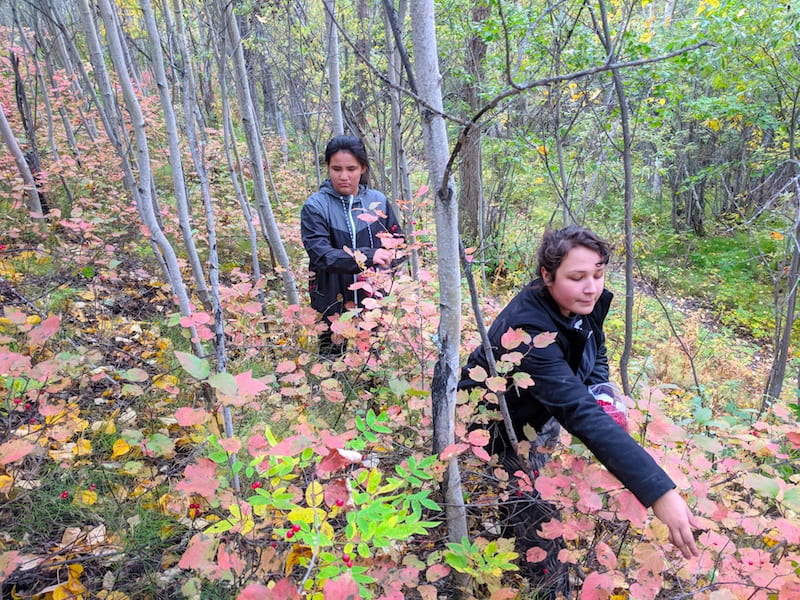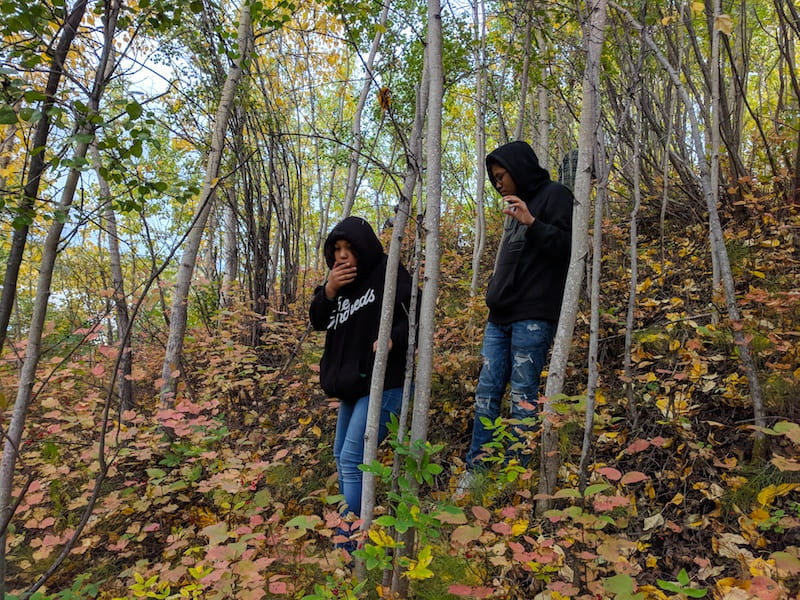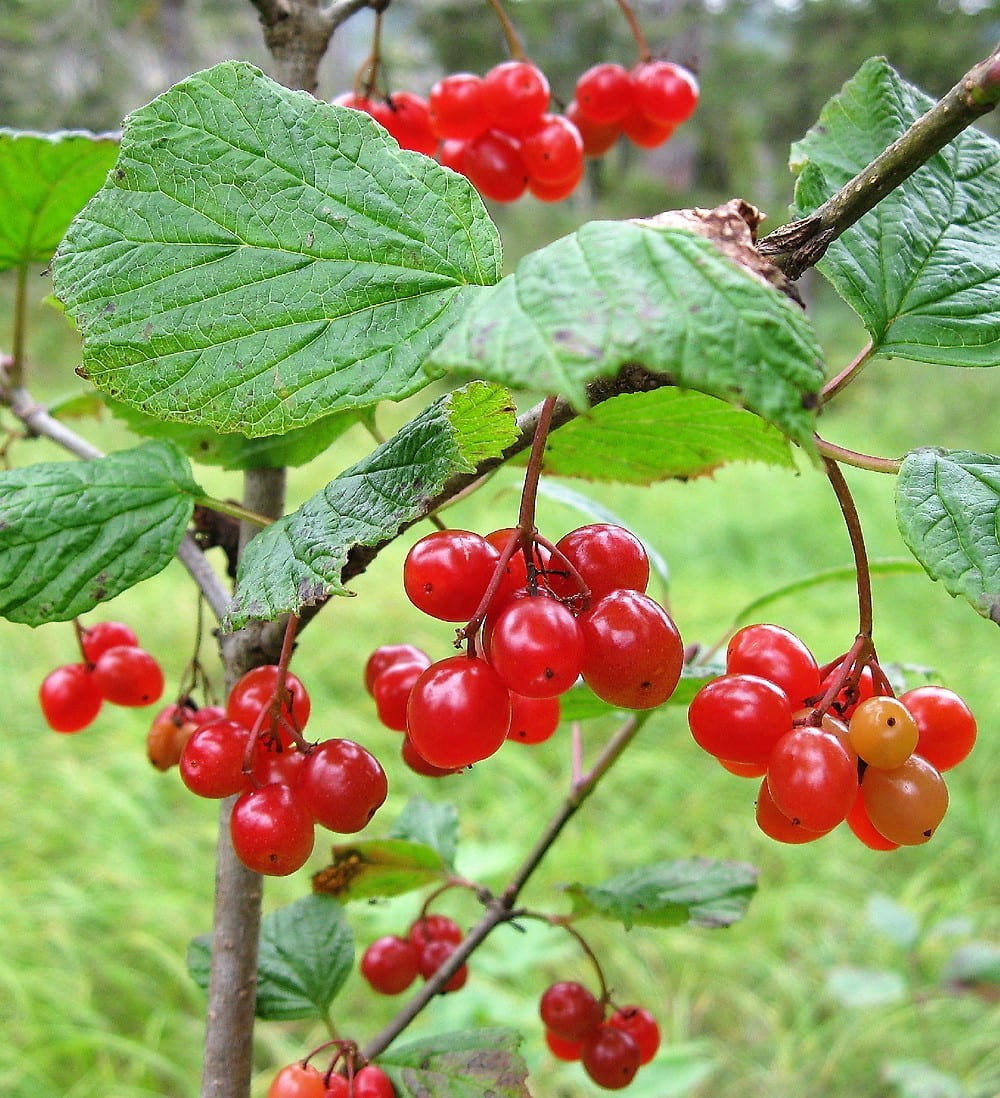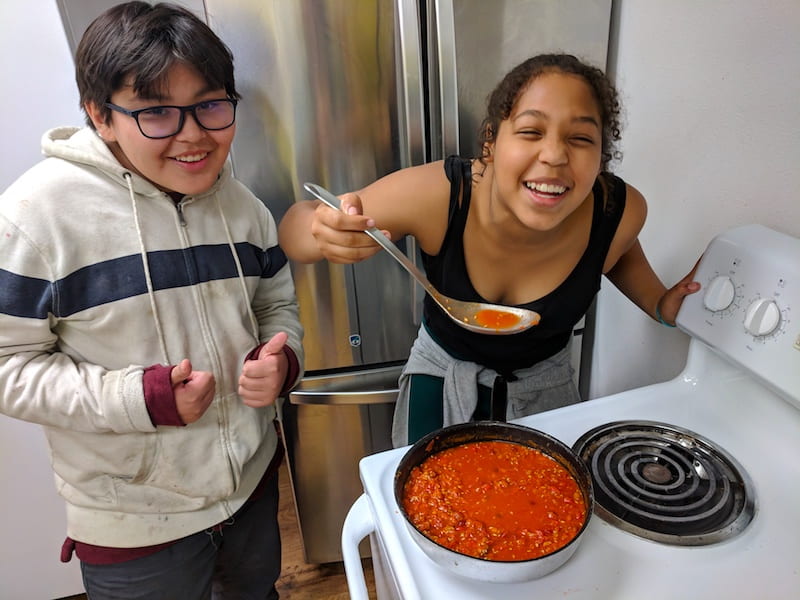The Our Alaskan Schools blog is excited to host our first-ever student blog post. This post comes to us from four middle school/high school students at Rampart School in the Yukon-Koyukuk School District. We are excited for this opportunity to share the exciting things happening in Rampart from the perspective of these amazing student-journalists!

Collecting & Identifying
Before setting off to collect local berries and fruit, we had to decide what we were picking and how to identify those berries. Once decided, we also had to determine where to find them. To do this, our class read online research articles from the University of Fairbanks, Alaska on the different berries and different recipes to pick out what we wanted to create with our pickings.
Once we choose what berries to pick, we went out to look for the different berries for our project. We decided to collect rosehips, highbush cranberry, and chokecherries. The class picked two quarts of each type of berry quickly before class was out and put them in the fridge overnight.
With the help of the visiting art teacher, Rocky, we collected leaves and made a rub of the plant leaf using crayons. We used the rubs to better understand the venation of the plants and use that for identification.

Processing
After we collected the berries around town we brought the different berries back to the school to be processed.
For the chokecherries, we picked the stems off of the fruit using forks because the stem is toxic. After the stems were off, the chokecherries were cleaned by gently rubbing the fruit against a paper towel. Then we simmered them in water for ten minutes. After the berries were heated, we used a cheesecloth to extract the juice from the heated berries. The next day we boiled the chokecherry juice with orange juice, lemon juice, and sugar for a few minutes. After it was boiling, we added liquid pectin to be boiled for a few more minutes. Finally, we had chokecherry jelly.
For the highbush cranberry jelly, we filled 3 quart ziploc bags of highbush cranberries. The next day, we cleaned the berries by gently rubbing the fruit against a paper towel, then left the cleaned berries to sit overnight. After the berries sat overnight, we boiled them and used a cheese cloth to extract the juice. The next day we boiled the juice with sugar for a while then added liquid pectin. Violá, we had highbush cranberry jelly.

Last but not least, there are rosehips. For these, we filled about four quart size bags full of rosehips. Then, we boiled them with about one cup of water stirring them constantly. Once done, we let it sit to cool and put them in a cheesecloth to strain all the seeds and stems. After we strained the rosehips, we put the liquid in a jar, and then let it sit overnight. After the berries sat overnight, we boiled them with sugar and liquid pectin. We didn’t quite get the consistency we wanted so the outcome was a rosehip syrup, which was just as good.
Tasting
After the berries were processed and cooked, we tasted our delicious formulations. One of the favorites was highbush cranberry jelly. It was a hot, bright red color and the aroma was sour and ripe. It tasted amazing! The jelly was sweet and sour like chinese food. The second creation was chokecherry jelly. The color of this jelly was a deep maroon and blue, and the taste was zingy and sweet with a hint of sour. Last was the rosehip syrup. We all enjoyed the deliciousness. It was sweet and rich.
Then, we shared samples with the Rampart Village Council. They loved the jellies and and syrups just as much as we did. We presented our jellies and syrups, and explained how they were made.
After we processed our jellies and shared them with the Rampart Village Council, we made a proposal with our “lunch-lady”, Forest Johnson. We asked him to make pumpkin pancakes with our homemade jellies. The entire school sampled and chose favorites between all three; everyone’s favorite was the rosehip syrup.
We truly had fun doing this project, we would love for you to try and tell us how your jelly making project turns out.

Recipes
Rosehip Jelly
4 cups rosehip juice
6 cups sugar
3 oz liquid pectin
Sterilize pint canning jars and prepare lids. Combine rosehip juice and sugar into a saucepan. Stirring constantly, bring to a full rolling boil that cannot be stirred down. Add the liquid pectin and heat again to a full rolling boil. Boil hard for 1 minute, stirring constantly. Skim off foam, immediately pour hot jelly into hot canning jars, leaving ¼ inch headspace. Wipe jar rims and cover with prepared two-piece lids. Process the filled jars for 5 minutes in a boiling water bath.
Chokecherry Syrup
2 cups chokecherry juice
1 cup apple juice (or orange juice)
¼ cup bottled lemon juice
6½ cups of sugar
3 oz liquid pectin
Sterilize pint canning jars and prepare lids. Combine chokecherry juice, apple/orange juice, lemon juice, and sugar into a saucepan. Stirring constantly, bring to a full rolling boil that cannot be stirred down. Add the liquid pectin and heat again to a full rolling boil. Boil hard for 1 minute, stirring constantly. Skim off foam, immediately pour hot jelly into hot canning jars, leaving ¼ inch headspace. Wipe jar rims and cover with prepared two-piece lids. Process the filled jars for 5 minutes in a boiling water bath.
Highbush Cranberry Jelly
5 cups highbush cranberry juice
7 cups sugar
3 oz liquid pectin
Sterilize pint canning jars and prepare lids. Combine highbush juice and sugar into a saucepan. Stirring constantly, bring to a full rolling boil that cannot be stirred down. Add the liquid pectin and heat again to a full rolling boil. Boil hard for 1 minute, stirring constantly. Skim off foam, immediately pour hot jelly into hot canning jars, leaving ¼ inch headspace. Wipe jar rims and cover with prepared two-piece lids. Process the filled jars for 5 minutes in a boiling water bath.
Have a story to share from your own school/district? You can either fill out this Google form, or simply send Sam Jordan content directly to work up a post. We are looking for posts of no more than 500 words, accompanied by 1-2 pictures if available. If you need ideas, check out this doc https://bit.ly/2HDqyGx